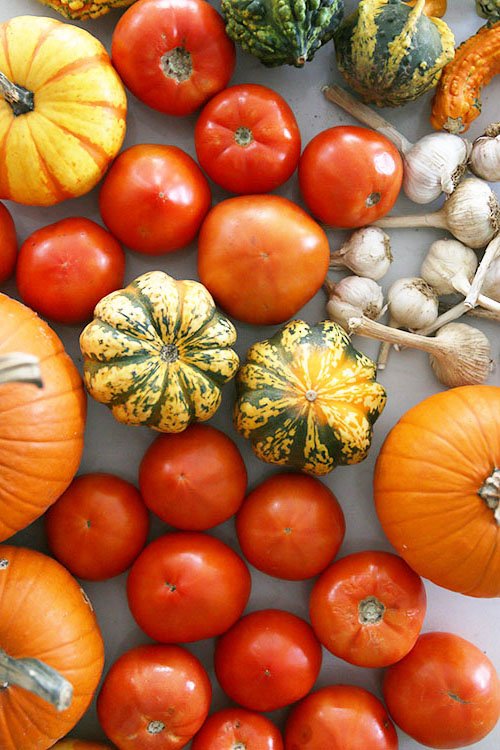Simple Tools To Teach Kids About The Importance of Recycling
As a country, we’ve become increasingly better recyclers over the last couple of decades, but with only 34% of waste either recycled or composted, we have plenty more opportunity to divert recyclable products from our landfills. On November 15, America Recycles Day, pledge to learn something new about recycling, share it with the Littles in your life and let the makers of wasteful products know that you expect something better.

Many of us recycle periodically (and particularly when it’s convenient), but we still send to landfills millions of tons of waste that could be recycled, reused and put to better use. For example, we waste 60 million tons of produce each year, most of which ends up in landfills and not composted, often a relatively easy and much more environmentally friendly alternative.
In our house, we have a separate bin next to the trash for recycling that collects the standard fare (paper, cardboard, cans and bottles). We’ve taught our little guys the basics of what goes in the trash and what belongs in the recycling container, though I’ve had trouble explaining why separation matters.
Teaching Little Ones About Recycling
Any time I’ve thought to have a conversation with my kids about why we recycle and compost, the ideas get big and abstract pretty quickly. Is a three year old really ready for the global warming talk? Or will they understand why it’s important to preserve forests by recycling paper products?
While my boys may be a bit young to understand why we recycle, they can gain a good grasp on what items should be recycled and which items end up in the trash. There are plenty of great resources to help teach kids ‘the rules of recycling’ and this guide for kids has lots of great games to play and activities to try. Many of the games and activities include printable worksheets or pieces so they are easy to execute (without a lot of prep time). I like the Recycle Memory Game and definitely learned from The Plastic Code worksheets.

This morning, we printed out the Recycle Memory game and played before lunch. As the boys picked up different pieces, we talked about why they were part of the game.


How Much Energy Does Recycling Save?
Although it’s hard to explain the big picture of saving the Earth to preschoolers, we can help them understand that recycling saves energy. The Environmental Protection Agency (EPA) offers a multitude of resources related to America Recycles Day, including an energy saving calculator.
The calculator translates the amount of energy saved by recycling a specific everyday product (like a weekly magazine or a glass bottle) into the length of time for which that saved energy could otherwise be used to power another product (such as a hair dryer, light bulb or laptop). I found this pretty interesting.
Recycling Creates Jobs
Did you know that, according to the EPA, the recycling and reuse industry accounted for 757,000 jobs and $36.6 billion in wages during 2016? Many of the jobs derive from industrial and commercial types of recycling, like that of metals and other construction materials.
As we continue to see meaningful growth in technology and consumption related to re-purposing of less traditional materials, hopefully related jobs and wages will grow in those sectors too. Many new companies in the textile industry, for example, are making efforts to close the loop (or continuously recycle and reuse) with textile materials.
Some companies recycle plastic bottles and turn them into fabric. Alden, from EcoCult, shared more about the recycled water bottle fabric and its sustainability characteristics as well as highlighted one particular brand’s efforts.
Evrnu shreds textile waste and breaks it down to the molecular level to create brand new fabrics from the components of recycled materials. The founder of the company did a great interview on the Spirit of 608 podcast if you’re up for listening. It was one of my favorite episodes from this show. The video below offers a nice overview of their mission.
Recycling Beyond the Basics
Cardboard, paper, aluminum, and certain types of plastics feel like low-hanging fruit in the recycling game. They’re common, easy to identify, and my local waste management company picks them up from the end of my driveway each week.
Some products, however, like batteries, light bulbs and electronics require special disposal. These products have earned themselves long-term collection spots around our house that I (all-too-infrequently) lug to the appropriate disposal location.
Even though it’s been a year since we moved into this house, I still haven’t found the right places to recycle everything. Fortunately, Keep America Beautiful offers a Recycling Location Finder feature on their America Recycles Day website allowing you to search for a proper recycling location based on the type of product and zip code. If you haven’t seen it, I recommend checking it out. The options go far beyond basic paper and plastic alternatives.
Recycling Is More Than a Consumer Problem
To fully address rapidly growing landfills and excessive waste, we need to look beyond just recycling and reusing at the end of a product’s life cycle. Excessive waste is a symptom of a larger issue surrounding the lack of due care or commitment from the corporations that make such products to be thoughtful about the full life cycle of their products. In most cases, companies probably just don’t care about or consider the life of their products and packaging after consumers purchase and the revenue hits their bank account.
Shouldn’t a company have some onus to be considerate of the full life cycle of their product and not just the segment of its life until it arrives in the consumer’s hands?
It’s important to consider how legislation, for example, can incentivize companies to make more sustainable choices during product creation and manufacturing as well.
As consumers, how we dispose of and reuse products makes an impact, but even larger impacts stem from regulation and changes made early in the life cycle of a product. Alden wrote another great article about this which I can’t do justice to summarize, so have a look for yourself. She takes a stronger approach to this than I have in my own life, but she makes some really good points about responsibility being shifted to consumers from government and corporations (who have a lot more power and influence to make large-scale changes).
It’s also worth nothing that America Recycles Days isn’t necessarily as genuinely pro-environmental as one might expect. America Recycles Day, started by Keep America Beautiful, has roots in campaigns paid for by large organizations and corporations intending to shift blame for waste management issues toward consumers and away from the corporations that introduce the products to the market.
We will never solve any major issue (social, environmental, financial, etc…) if we only address the symptoms and ignore the root causes of a problem.
Politics aside, we can all take steps to make changes whether it be at a consumer level or as an activist encouraging the powerhouses to take action.
Step Up Your Game and Share The Knowledge
Even if you’re an avid everyday recycler, most of us have room for improvement. We also owe it to our kids to teach them the ropes so they can protect the world that is the foundation of their future (hopefully with more success than we collectively have in the last several decades).
This week, consider taking two small steps to make an impact on cleaning up our world. These are both so easy.
First, take the #BeRecycled pledge. Expand your recycling practices, call your representative to encourage more sustainable legislation, or learn a new fun fact about recycling that can help you and your family become better recyclers.
Second, share a photo on social media of something you can’t recycle like packaging, a disposable product or a consumable. Use #americarecycles, tag the brand that makes the product, and ask them why they use non-recyclable packaging. Encourage your kiddos to help you choose what to post, and let the brand know you want something better!










